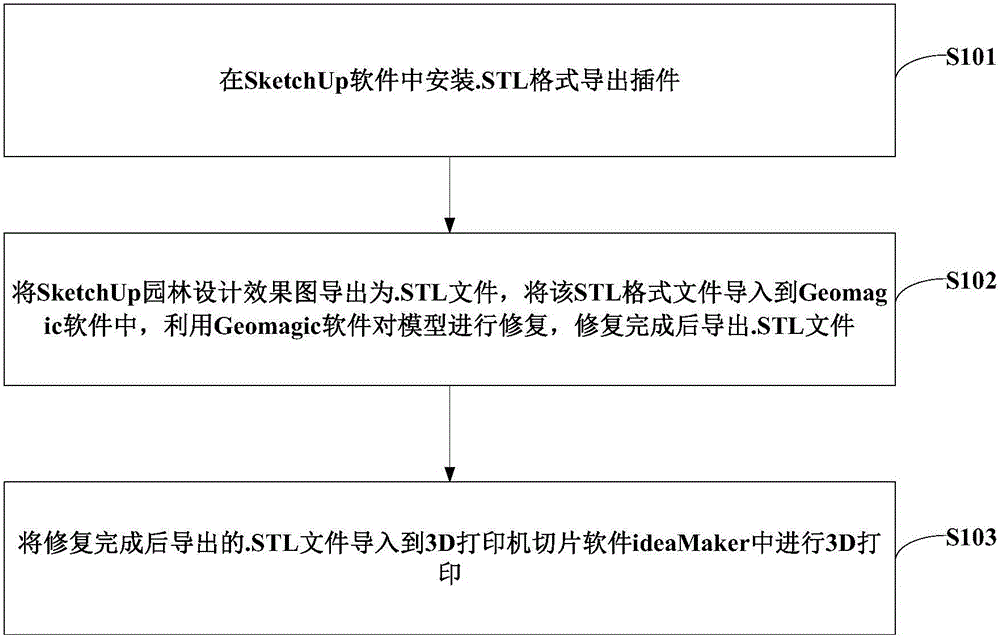Method for converting SketchUp landscape design effect drawing into 3D printing landscape model
A technology of 3D printing and renderings, applied in the field of 3D printing, can solve the problem that the 3D design renderings cannot output solid models, etc.
- Summary
- Abstract
- Description
- Claims
- Application Information
AI Technical Summary
Problems solved by technology
Method used
Image
Examples
Embodiment 1
[0024] The selected model is a landscape rockery. The overall height of the proposed rockery model is 300mm.
[0025] The current 3D printer slicing software can only read files in .STL format, but because SketchUp itself cannot export .STL format, an independent plug-in needs to be installed.
[0026] The .STL file exported by SketchUp is directly imported into the 3D printer slicing software ideaMaker;
[0027] The damage is so bad that it cannot be printed at all. There are two reasons: first, the model itself is composed of flakes and is not a complete entity; second, it may be because the internal programs of different software are different, and the data is easy to lose when the file is converted (There will be defects such as cracks, cracks, and broken surfaces in the model file), so it is necessary to repair the broken surface of the .STL model. The model was repaired using Geomagic surface repair software.
[0028] Import the STL format file exported by SketchUp i...
Embodiment 2
[0032] After the graphics of the courtyard house undergo the same conversion as the landscape rockery, the main problems are as follows:
[0033] Textures of materials are not valid for model making (for example: bricks, wall engravings, etc.), and this part will not be considered.
[0034] After conversion, the house is not a solid body, and there are many hollows inside. Basically, pillars are used to support the roof of the triangular cone. If it is printed as a whole, because of the process principle of the 3D printer, a large number of supports will be generated in the indoor space, which is inconvenient for post-processing. Therefore, no overall printing is used. Decompose the roof during printing, take the roof out and print it, and then stand on it with glue after printing, so that there is no floating and no support, and the effect will be much better.
[0035] The converted pond is a plane with no thickness, but a certain thickness is required for 3D printing. Acco...
PUM
 Login to View More
Login to View More Abstract
Description
Claims
Application Information
 Login to View More
Login to View More - R&D
- Intellectual Property
- Life Sciences
- Materials
- Tech Scout
- Unparalleled Data Quality
- Higher Quality Content
- 60% Fewer Hallucinations
Browse by: Latest US Patents, China's latest patents, Technical Efficacy Thesaurus, Application Domain, Technology Topic, Popular Technical Reports.
© 2025 PatSnap. All rights reserved.Legal|Privacy policy|Modern Slavery Act Transparency Statement|Sitemap|About US| Contact US: help@patsnap.com

